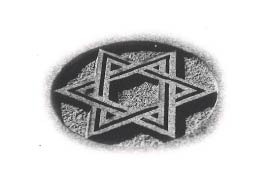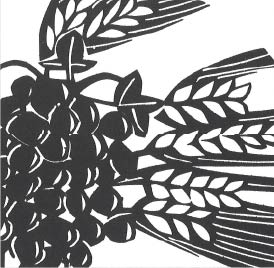We presented service plans for the three Old Testament fall festivals in Reformed Worship 61 (Sept. 2001). The three springtime Old Testament “religious festivals” are
- Purim—the celebration of deliverance from Haman’s plot to kill the Jews
- Passover—the celebration of deliverance from Egypt
- Pentecost—the Feast of Weeks, or firstfruits
In the Jewish calendar, each of these festivals commemorates one of the great acts of God’s provision or deliverance. But they are also shadows, hints, prophecies of the One who was to come. They help us as a church understand how the Old Testament is integral to the New Testament. As we celebrated these festivals we had the sense that significant portions of the Bible—many of them very obscure and strange to us—were unlocked and given to us. And as we saw their fulfillment in Christ, some shadowy parts of the Old Testament came into clearer light.
Keep in mind that our celebrations, as presented in this article, are “Christianized” versions of the way Old Testament feasts are celebrated by contemporary Jews.

Purim—Deliverance from a Murderous Plot
Scripture
Esther 9:20-28; Matthew 2:1-12; Revelation 12:1-12
Song Suggestions
“Beams of Heaven” PsH 577
“Christian, Do You Struggle?” PsH 575
“Joy to the World” PsH 337, PH 40, RL 198, SFL 137, TH 195, TWC 146
“Let All Mortal Flesh Keep Silence” PsH 341, PH 5, RL 188, TH 193, TWC 167
“Precious Lord, Take My Hand” PsH 493, PH 404, TWC 638
Psalm 116: “I Love the Lord” PH 362, SNC 226, 227
“We’ve Come this Far by Faith” PsH 567
“When the Storms of Life Are Raging” SNC 200
“You Are My Hiding Place” SNC 180
Sermon Notes
To develop the theme of promise and fulfillment, we moved from the story of Esther to Herod’s massacre of the children to the account of the dragon in Revelation.
- The Story of Esther (Esther 9:20-28)
The festival of Purim commemorates the time when the Jews got relief from their enemies. It is a time of great rejoicing and delight, celebrated on the 14th and 15th days of the month of Adar (days that generally fall in either late February or early March). The Jews were to celebrate this time when their sorrow was turned into joy with days of feasting and presents of food (v. 22).
Purim comes from the word pur, meaning “lots.” Chapter 3 of Esther describes how the astrologers cast the pur to help Haman select the most favorable day to destroy the Jews.
Destroying the Jews is a theme that occurs throughout history, beginning with Pharaoh and his order to the midwives to kill all the Jewish boy babies, and continuing with the Amalekites in the wilderness and in the land of Canaan, the Philistines and the Assyrians, and all the way up to the twentieth century, with Hitler; and, as some contemporary Jews will tell you, it still continues with present-day radical Arabs and Palestinians. That may be why there are so many Jewish holidays. As one wag put it, “They tried to kill us; they failed; let’s eat.”
In the Bible, attempts to destroy the Jews are always related to the fact that God had chosen these people to bring a Savior into the world. Attempts to destroy the Jews are attempts to destroy the hope of the world.
The villainous Haman’s attempt to kill the Jews was thwarted by the keen insight of Mordecai and the courageous help of Queen Esther. Thus a great victory—essential to the coming of the Messiah—was snatched out of the jaws of defeat.
But other villains were ready to thwart God’s promised salvation.
- The Slaughter of the Innocents (Matthew 2:1-12)
Like Haman, Herod issued an edict to destroy a people. This story of the slaughter of the innocents is the part of Christmas that we don’t like. But it is inseparable from all the parts we typically associate with this season of joy.
This story tells us what kind of world Christ came to save. We encounter villainous people with vile plans who do not want to see us or our children grow in faith. We face Hamans and Herods and Hitlers who want to see promises broken and the community of faith destroyed.
Just as the celebration of Purim makes no sense without Haman’s treachery and Mordecai’s wisdom and Esther’s courage, so too Christmas rings hollow if we try to divorce it from the brutal world the Christ child came to save.
- The Dragon (Revelation 12)
What a picture! A brilliant woman clothed with the sun and the stars, in labor. Right next to her another villain—an ugly, huge, powerful, red dragon, waiting to devour the newborn child. This too is the Christmas story.
Make no mistake, this dragon is a frightening creature. Wrap up all of the things you most fear—terrorists, disease, pollution, war, economic chaos; embody it in a creature of great intelligence and great malevolence, and you have the dragon. His name is Satan or Diablos, the diabolical one. The dragon has seven heads with ten horns and seven crowns on its heads. Horns symbolize power; crowns symbolize authority. Why seven heads? Like the fearsome hydra of ancient Greek mythology, a seven-headed creature is hard to kill.
The dragon’s effect on creation is devastating—as it waits to devour the child, it sweeps stars from the sky. But its plans are thwarted. As soon as the child is born, he is caught up and taken away to safety.
And that is the story of our celebration. They tried to kill us. They tried to kill our hope, the world’s hope, the world’s future. But they failed. The infant Christ grew up. He accomplished our salvation by his death on the cross and his glorious exit from the tomb. Our hope is secure. The prince of this world is about to be cast out of our world, just as he already has been cast out of heaven.
Let’s celebrate and eat and make merry!
Do not let anyone judge you . . . with regard to a religious festival, a New Moon celebration or a Sabbath day. These are a shadow of the things that were to come; the reality, however, is found in Christ.
—Colossians 2:16-17
Passover—Deliverance from Bondage
For the Passover script used in these service plans, click here.
Scripture
Luke 22:17-18; John 13:3-17; 1 Corinthians 5:6-7; Isaiah 53:5; Zechariah 12:10; John 13:21-30; Matthew 11:28; Deuteronomy 26:8; John 1:29; Luke 1:17; Matthew 11:14; Revelation 21:1-4, 22
Song Suggestions
“Christ Is the World’s True Light”Briggs
“Guide Me, O My Great Redeemer”Williams
“No Weight of Gold or Silver”Dudley-Smith
“O Christ, the Lamb of God”Agnus Dei
“Sing, Choirs of New Jerusalem”Fulbert of Chartres
“Trumpet the Name! Praise Be to Our God!”Seerveld
Sermon Notes
Of all the Jewish festivals, Passover is the one most familiar to New Testament Christians. We know it as the festival that was going on during the time of Jesus’ final visit to Jerusalem. We also know it as the commemoration of the great liberation of the children of Israel from the land of Egypt.
We structured this sermon as if we were eavesdropping on a Jewish family as they celebrated a Passover seder meal. Seder is something like our word liturgy—it means “order of service.” As the family retold the story of the Exodus and of the slaying of the lamb for the deliverance of the people, the pastor interjected Scripture showing how God was preparing the way for his Son, the last Lamb of God.
We used the communion table set with the following items for the seder meal:
- a roasted shank bone
- bitter herbs
- finely chopped apples and nuts mixed with cinnamon and honey
- parsley dipped in salt water
- wine or grape juice
- matzoh
During the seder, the pastor picked up each item and described its significance, making a connection between the Passover seder and Christian communion. For a complete script of the service, click here.
Pentecost—Firstfruits
For the Pentecost drama used in these service plans, click here.
Scripture
Jeremiah 31:31-33; Galatians 4:4-6; 1 Corinthians 15:20-23; Romans 8:22-23
Song Suggestions
“For the Fruits of His Creation”Green
“I Offer My Life”Cloninger, Moen
“I Will Put My Law”CRC Publications
Psalm 105: “The Steadfast Love of the Lord”McNeill
“Stay Awake, Be Ready”Walker
“Thy Word” SNC 86
“What Can I Give Him” SFL 142

Sermon Notes
We structured this sermon as a drama in which the father (in our case, the pastor) periodically steps out of the drama to address the congregation. The complete drama is available at www.reformedworship.org.
The drama includes a family’s reenactment of a Pentecost celebration that might take place in a contemporary Messianic Jewish family. In the drama, the congregation learns
- why we celebrate the feast.
- what foods are eaten.
- how Pentecost in the New Testament is a fulfillment of Jeremiah’s Old Testament prophecy that God would make a new covenant with God’s people.
- how Christmas and Pentecost are related.
- the significance of “firstfruits” and our calling to give generously of our own firstfruits.
A Final Note
As mentioned in the first article in RW 61 (“Sound the Trumpet”), we did all these services during Advent, Christmas, and Epiphany a couple of years ago. Children and grown-ups alike still mention these services as highlights of worship. You may wish to do them singly, in two groups as presented in these articles, or all together during Lent or during the summer. No matter when you choose, we hope you will experience, as our congregation did, a deeper understanding of how God has kept covenant with us, and how important it is for us to keep covenant with younger generations. May your celebration of the feasts continue the tradition of teaching little ones the mighty acts of God.
Artwork by Steve Erspamer, from Clip Art for Year A (© 1992, Archdiocese of Chicago: Liturgy Training Publications, 1800 North Hermitage Ave., Chicago, IL 60622; 1-800-933-1800).

